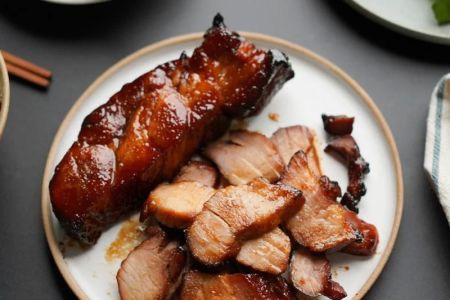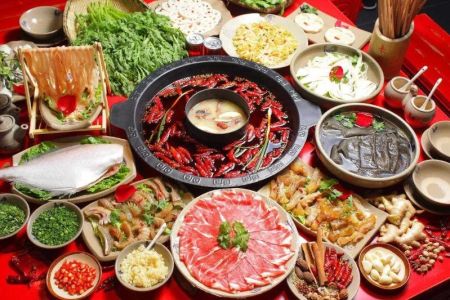Why Are There So Many Chinese Restaurants in the U.S.?
As a lover of good food and cultural exploration, I’ve always been curious about the widespread popularity of Chinese restaurants in the United States. Whether I’m in a bustling city or a quiet suburban neighborhood, it seems like there’s always a Chinese restaurant nearby, ready to serve up a variety of delicious dishes. Over the years, I’ve started to notice a fascinating trend: Chinese restaurants have become an integral part of the American culinary landscape. But why are there so many Chinese restaurants in the U.S. compared to other ethnic cuisines? In this article, I’ll explore the reasons behind this phenomenon, from history and immigration patterns to cultural adaptation and evolving tastes.
1. The History of Chinese Immigration and Early Restaurant Establishment
One of the key reasons for the large number of Chinese restaurants in the U.S. dates back to the 19th century when Chinese immigrants began arriving in America. Initially, Chinese immigrants came to the U.S. to work on the construction of the Transcontinental Railroad and in the mining industry. As the Chinese population grew in cities like San Francisco and New York, many of them faced discrimination and found it difficult to work in other professions. This led to the establishment of Chinese-owned businesses, including restaurants, as a way to serve both their community and the wider public.
I’ve read stories about how the early Chinese restaurants catered to Chinese immigrants, offering familiar foods from their homeland. Over time, these restaurants began to attract non-Chinese customers, drawn by the unique flavors and dishes that weren’t commonly found in mainstream American restaurants. This historical foundation laid the groundwork for the explosion of Chinese restaurants across the U.S., especially as Chinese communities continued to grow in urban areas.
2. Adaptation of Chinese Cuisine to American Tastes
Another reason for the proliferation of Chinese restaurants is the adaptability of Chinese cuisine. When Chinese immigrants first started opening restaurants in the U.S., they had to modify their traditional recipes to appeal to American tastes. For instance, dishes that were too spicy or unfamiliar were adjusted to be milder and more palatable to a Western audience.
This process of adaptation helped Chinese food evolve into the Americanized version we see today in many Chinese restaurants. Dishes like sweet and sour chicken, chop suey, and egg rolls became widely popular. As someone who has dined at countless Chinese restaurants, I can see how these adaptations played a significant role in making Chinese cuisine more accessible to Americans. It wasn’t just about replicating the flavors of China; it was about creating a fusion of flavors that suited the American palate.
3. The Accessibility and Affordability of Chinese Food
Chinese food has always been seen as an affordable and satisfying option, which is another factor contributing to the large number of Chinese restaurants. From my experience, Chinese restaurants often offer generous portions of food at relatively low prices, making them a popular choice for families, college students, and individuals on a budget. This accessibility made Chinese restaurants an attractive dining option in both urban and suburban areas, where people were looking for delicious, filling meals at an affordable price.
Additionally, the variety of dishes available in Chinese restaurants allows customers to find something for everyone, from meat lovers to vegetarians. The concept of ordering several dishes to share with a group also makes dining at a Chinese restaurant an appealing experience for families and friends. I’ve often found that the communal style of dining fosters a sense of connection, making it a favorite choice for casual gatherings and celebrations.
4. Chinese Cuisine as a Culinary Tradition with a Rich History
Chinese cuisine is incredibly diverse, with each region of China offering its own unique flavors, ingredients, and cooking techniques. Over time, I’ve come to appreciate how Chinese food isn’t just one style but a broad spectrum of culinary traditions. From the bold, spicy flavors of Sichuan cuisine to the milder, savory dishes of Cantonese cuisine, Chinese food offers something for every taste. This variety makes Chinese cuisine appealing to a wide range of people, which helps explain why so many Chinese restaurants can be found in the U.S.
For me, the rich history and cultural significance of Chinese food also add to its appeal. Many dishes are steeped in tradition, with centuries-old recipes passed down through generations. Whether it’s the symbolism behind certain ingredients used during Chinese New Year or the balance of flavors in a well-prepared dish, Chinese cuisine offers a depth of meaning that other types of food may not. This cultural richness makes dining at Chinese restaurants more than just a meal – it’s a culinary experience that allows me to connect with another culture.
5. The Popularity of Chinese Food Chains and Takeout Culture
Over the past few decades, Chinese food chains have become a staple of American dining culture, especially when it comes to takeout and delivery. The convenience of ordering Chinese food for takeout or delivery has contributed to the growth of Chinese restaurants. Many of these restaurants offer a wide selection of familiar dishes that can be quickly prepared and packaged for takeout, making them perfect for busy people like myself who want a delicious meal without the hassle of cooking.
One of the factors I’ve noticed is the influence of Chinese-American food chains, such as Panda Express, which has made Chinese food more mainstream. With their extensive menu, fast service, and affordable prices, Chinese food chains have introduced millions of Americans to the flavors of Chinese cuisine. In addition to fast food chains, smaller, family-owned Chinese restaurants continue to thrive, offering a more authentic dining experience. This combination of fast food options and traditional restaurants ensures that Chinese food remains widely accessible to people across the U.S.
6. The Globalization of Chinese Food Culture
Chinese food has become so ingrained in American culture that it has transcended its origins as an immigrant cuisine. It’s now a global phenomenon, enjoyed by people of all backgrounds. I often find that Chinese food isn’t just popular in Chinese communities anymore; it’s beloved by people from all walks of life. The globalization of Chinese food can be attributed to the increasing exposure to different cultures through travel, media, and technology.
This widespread acceptance of Chinese cuisine has led to an increase in the number of Chinese restaurants opening across the country. With the rise of social media, I’ve also seen an increase in food bloggers and influencers sharing their experiences at Chinese restaurants, further fueling the popularity of Chinese food. Chinese cuisine has become an integral part of the American food landscape, and it continues to evolve and adapt to new trends, making it a favorite choice for many.
In conclusion, the large number of Chinese restaurants in the U.S. can be attributed to a combination of historical, cultural, and practical factors. From the early waves of Chinese immigration to the adaptation of Chinese cuisine to American tastes, Chinese food has found a permanent place in the hearts and stomachs of many Americans. Whether it’s the affordability, the rich history, or the diversity of dishes, there’s no denying that Chinese restaurants have become a beloved part of American dining culture. If you’re looking for more information or want to explore new Chinese restaurant options, I highly recommend visiting Chinese Food for expert recommendations and tips.






![Top Chinese Restaurants for Authentic Cantonese Cuisine in [Your City]](https://img.gochinarose.com/d33/2507/4157910400_450x300.webp)
